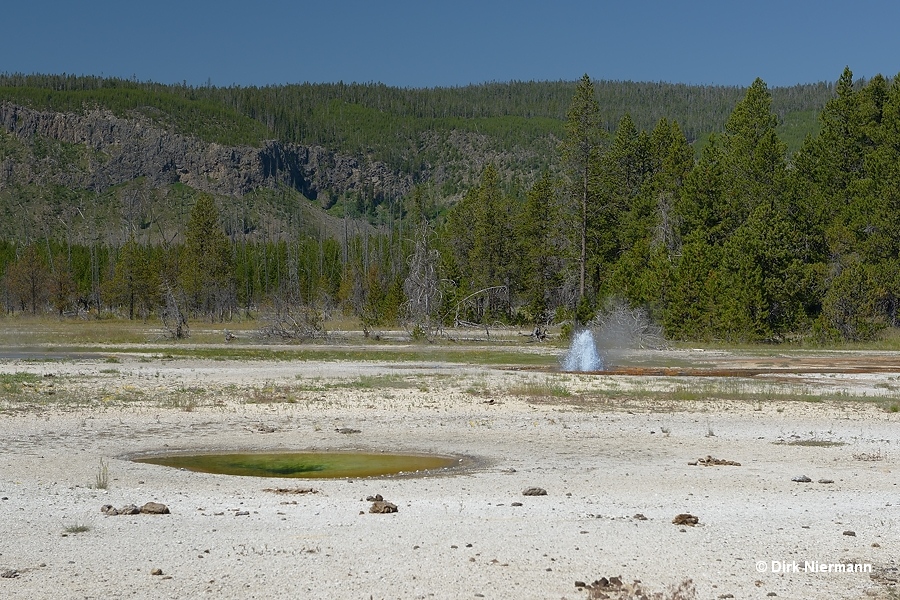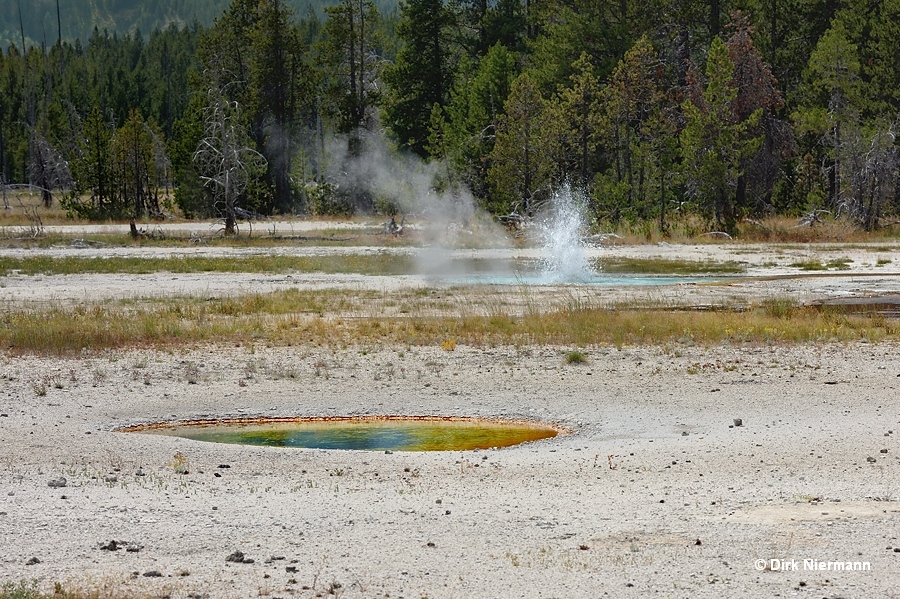Upper Geyser Basin, Orange and Round Spring Groups
Orange Spring Group lies diagonally across the paved road from Castle Geyser, Round Spring Group follows on the same side of the road directly before you reach the branch to Daisy Group. Both groups are closed to entry and comprise only a handful of thermal features, some of them located close to the road, others at a larger distance and hard to spot.
The name-giving Orange Spring is consisting of three shallow, merging bowls and occupies the top of a flat sinter mound. Spouting activity is known, but very rare. In contrast to Orange Spring the small UNNG-OSG-1, informally called Pulsar Spouter, shows perpetual activity. From the road it can be spotted on the far side of Orange Spring.
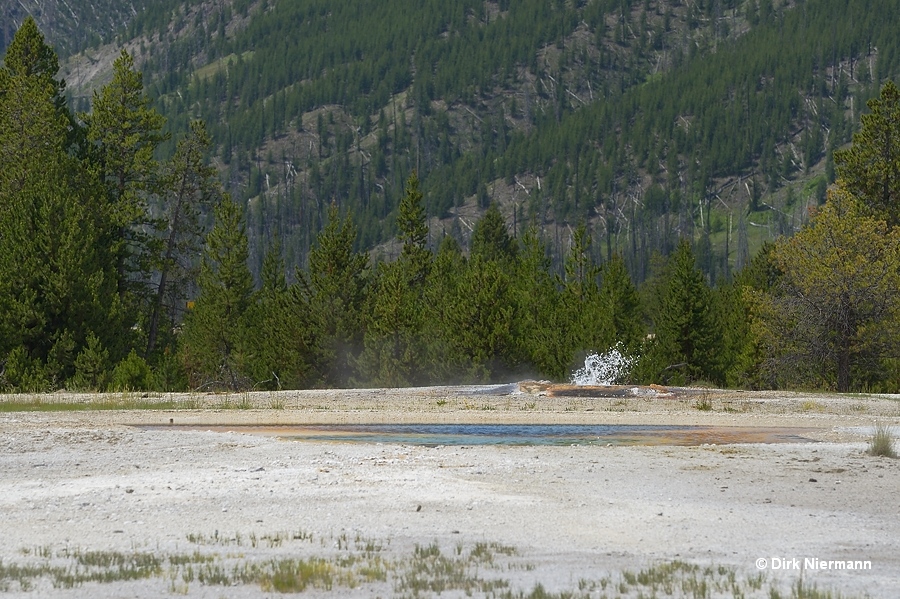
The other visible members of the Orange Spring Group are usually rather inconspicuous. In the field between Orange Spring and the road Orange Spring Geyser only shows up if the water level is near overflow or if it is erupting, which is very rare. Closer to the trail UNNG-OSG-2 is to be seen, which was active as a geyser in the 1970s.
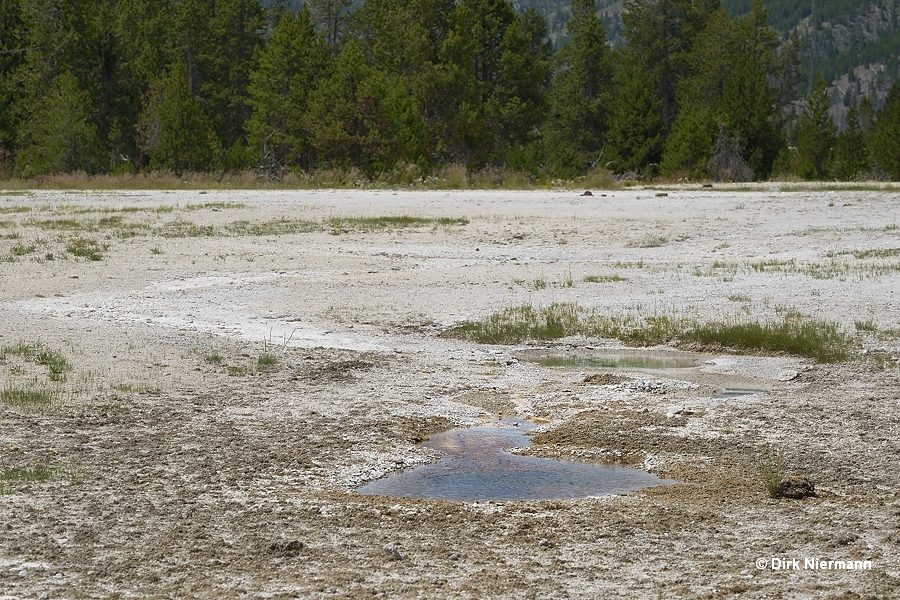
A few feet southeast of UNNG-OSG-2 two unnamed pools lie next to the trail.
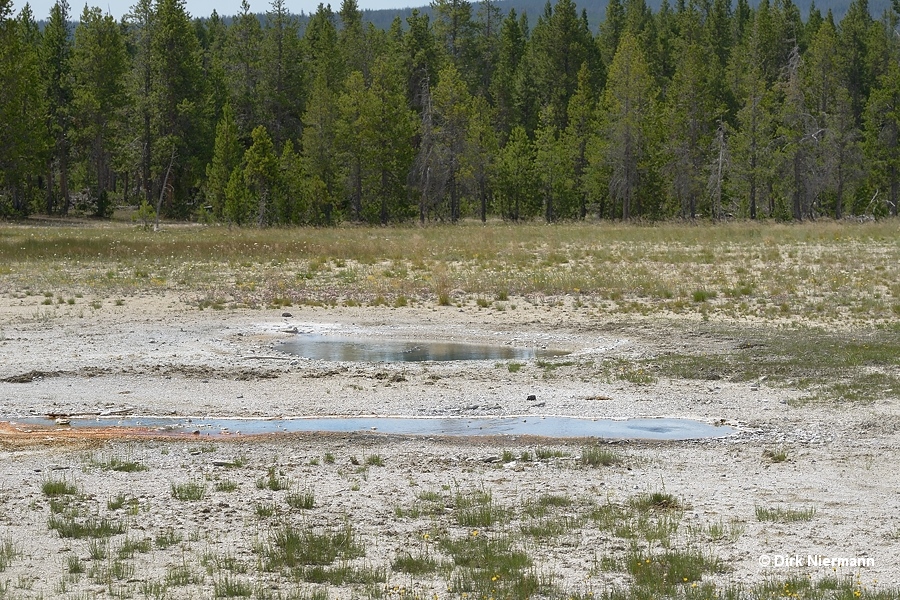
Coming from direction of Old Faithful Geyser, East Round Spring is the foremost feature of the Round Spring Group. Eruptive activity dates back more than half a century.
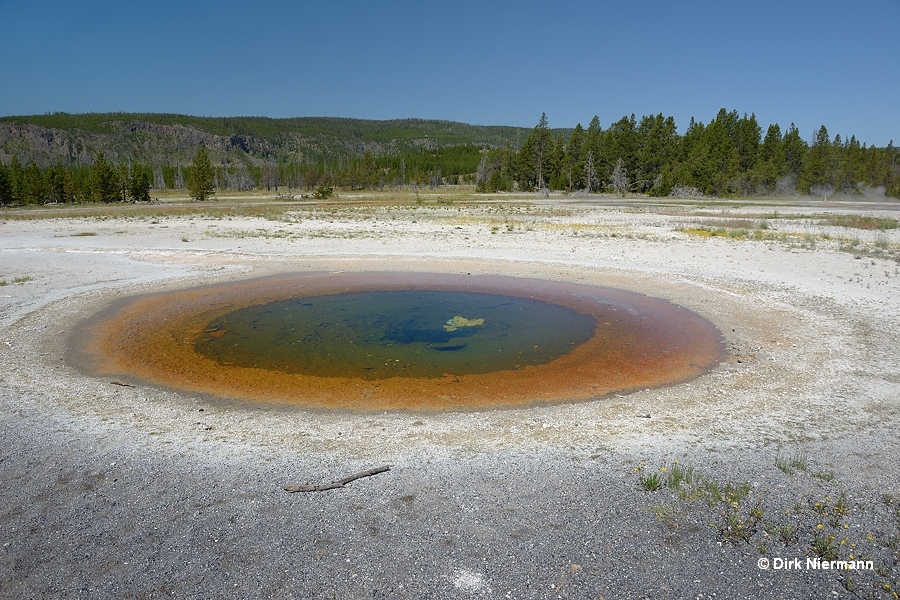
Trefoil Spring and the busy Round Spring Geyser are easy to observe, too. The other features of Round Spring Group are hardly to not at all visible from the trail.
